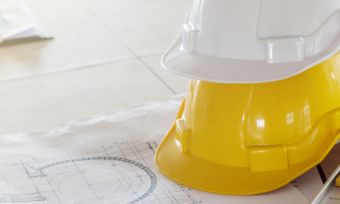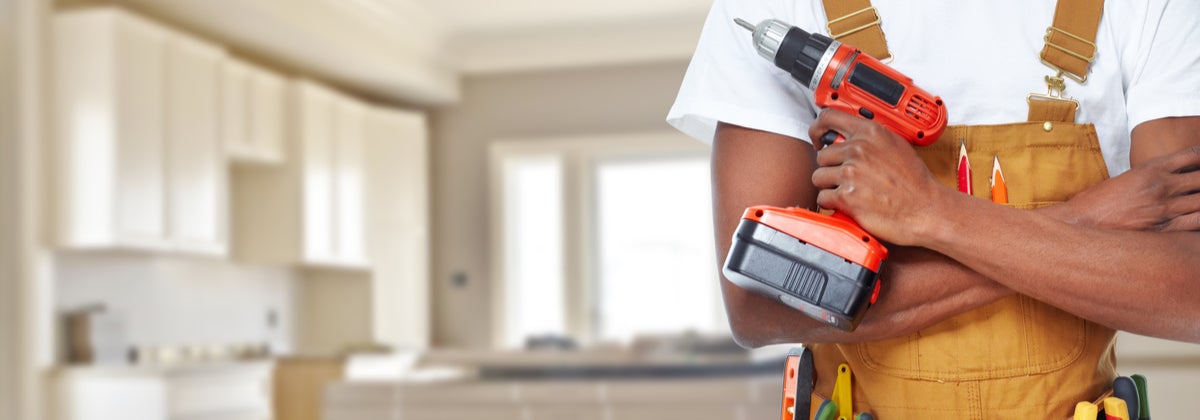A well-planned, well-executed reno can add value to a home. But not all renovations hit the mark. Here we run through some of the renos most likely to add value to a home and their costs – plus the projects to think twice about. Let’s take a look.
How much does a home renovation cost in New Zealand?
The cost of renovating a home varies considerably depending on whether its a total overhaul or just a single room. And, of course, the cost of your choice of fixtures and fittings plays a big part. However, depending on the job you plan to undertake, you might find that you’re looking at the following rough costs:
- Kitchen renovation: $30,000 to $50,000+
- Bathroom renovation: $15,000 to $45,000+
- Bedroom renovation: $2000 to $40,000
- Add a garage: $30,000 to $100,000+
- Outdoor improvements: $1000 to $45,000+
- Renovations less likely to add value
- Key takeaway
1. Kitchen renovation
Renovating a kitchen can cost anywhere from $30,000 to $50,000+, depending on the extent of the renovation and the materials you choose.
However, a great kitchen makeover doesn’t have to involve designer brands. Property valuers don’t look at brands, or care if a kitchen is from a DIY flat-pack provider. However, it’s important that the kitchen suits the house – consistent design adds value. It must also be practical and functional, and the kitchen needs to look good.
When it comes to setting a budget, the average mid-range kitchen makeover can cost up to $50,000, but the sky really is the limit. That makes it essential to set a firm budget.
A general rule of thumb is to spend around 3% of your home’s current market value on the kitchen. On this basis, a $1 million home can demand a $30,000 kitchen budget including materials, appliances and labour. Spend something like $75,000 on a home worth $450,000 and you could be overcapitalising in a big way.
Kitchen makeovers might not come cheap but the pay-off can be impressive. Ideally, home owners should be looking to double their investment as a minimum. So if you spend $30,000 on a kitchen, you’d want to see a $60,000 uplift in the property’s value.
How to save money on a kitchen renovation
If you are looking to save money on a kitchen renovation, you might consider some of the jobs you can do yourself – for example, if you feel confident enough to roll up your sleeves and paint the space on your own, this could be a way to save on labour costs.
If your current kitchen cabinets are reusable, you might want to carefully remove them and put them for sale online, instead of scrapping them. It’s surprising what people will buy.
Also, when it comes to renovating a kitchen, moving plumbing and electrical points can also prove costly due to labour costs, so keeping these things where they are in the new design can be another way to save money.
2. Bathroom renovation
Despite often being the smallest room in a house, a bathroom renovation can soak up plenty of cash. Again a budget of 2%-3% of the home’s value is recommended.
Renovating a bathroom can cost anywhere from $15,000 to $45,000+, depending on the extent of the renovation and, in particular, the materials you choose. A higher-end fit-out will cost a lot more than a basic one, and one of the biggest expenses you’re likely to face is tiles.
Typical bathrooms are about 9-12m², and an average bathroom renovation hovers around the $20,000 mark for materials and labour. Again, you should be looking for a $2 rise in the property’s value for every $1 spent on renovations.
You’ll need to put aside three to four weeks for a fully renovated bathroom.
However, as with a kitchen reno, a bathroom renovation is one of the best ways to add value to your home. A redo of this room could run the gamut from a simple makeover, involving painting and updating the vanities and tapware, through to a major renovation, which could include new tiling, flooring and a new shower.
Two must-have features for modern bathrooms are a bath and storage. Baths can take up plenty of room, but they hold lots of appeal, especially for families. Storage can add big value, too, which can be achieved through a bigger vanity, as well as concealed storage in walls.
One area where it’s easy to go overboard is expensive feature tiles. They might look great, but they don’t always pull their weight in terms of value-add. It’s also possible to overcapitalise on fixtures – a stone bath, for example, may look amazing, but it can also set you back $10,000.
The beauty of setting a maximum budget of 3% of your property’s value is that it stops you making silly spending decisions when your property may not warrant that level of finishes.
Of course, you may not be looking to sell – there is an increasing trend towards the idea of a bathroom as a luxury retreat, a place you can go to get away from the world and relax in spa-like amenities after a hard day’s mahi. If you’re renovating your bathroom with this in mind, you may need to spend on the higher end of the scale to get the look and feel you want, but it may be worth it to you for the ability to relax and unwind in comfort.
How to save money on a bathroom renovation
If you’re looking to save on a bathroom renovation, one way might be to consider retaining as much of the existing layout as possible. Moving plumbing points can be expensive and add to labour costs, and keeping them where they are can be one way to help prevent a budget blowout.
Tempting as it may be to attempt DIY in a bathroom to save some money, avoid this unless you are sure you can do the job correctly, as fixing mistakes in a bathroom can be costly.
3. Bedroom renovation
The cost of renovating a bedroom can vary greatly, and you could end up spending anywhere from $2000 to $40,000 or higher, depending on the scope of the renovation and the kinds of furnishings you choose.
The biggest expense when it comes to renovating a bedroom is likely to be an ensuite, should you choose to add one. Time-wise, you might expect a more simple bedroom renovation to take less than a week, but adding an ensuite could stretch the time out to several weeks.
The scope of what you can achieve with a bedroom renovation is wide, and the cost involved reflects this. A basic bedroom renovation might simply involve putting a fresh coat of paint on the walls, skirting boards, door frames and ceilings. And, if you do the job yourself, your main expenses will be just paint and brushes. However, investing in new bed coverings, curtains and other decorative items will add more to the price, but could be a simple way to freshen up your space.
A mid-range bedroom renovation might also include such things as a new bed frame, new flooring, storage units or even wallpaper, which will add to the budget. A premium renovation is when the big money comes into play – you may opt to spend upwards of $35,000 installing such things as an ensuite, walk-in closet, dimmable lights, luxurious fabrics, soft furnishings and other things to give your bedroom the feel of a retreat.
The ultimate bedroom renovation is adding an entirely new bedroom. Property prices are often shaped by the number of bedrooms, and creating an extra bedroom of decent size can be a real value-add. We’re not talking about a full-blown extension. It’s more about clever use of existing space in the home. This can be achieved most cost-effectively by rejigging the internal layout and installing new walls.
Oversized lounge rooms that can be reduced slightly in size, formal dining rooms that never get used, a large laundry, and roof space all have the potential to create an extra bedroom. The key is to only do this when space genuinely allows, and it doesn’t negatively impact on the quality of the other rooms in your home.
To be sure you get the balance right, it helps to know what other homes in your area offer potential buyers.
How to save money on a bedroom renovation
The bedroom is one area of the home in which a simple DIY makeover could still yield an impressive result. If you don’t want to spend the money for a full remodel, installing features like walk-ins and ensuites, you could opt for a fresh coat of paint (applied yourself), a change of sheets and cushions and a new rug, and still make the room feel bright and new.
4. Add a garage
A garage can be a big value booster and can offer more than a secure spot for the family car, as garages often double up as informal storage sheds, laundries and even gyms.
A new garage is an expensive addition to a home. Prices start at around $30,000 and can reach upwards of $100,000. It’s important to remember that any building above 10m² with all sides enclosed requires building consent. This cost varies from region to region, so you will need to factor in this cost into your budget, on top of materials and labour.
A carport may be kinder on your budget and they’re definitely better than nothing. But in terms of value-add, carports are the poor cousin to a garage. So if you’ve room to the side or front of the home and your budget allows, it’s worth adding a garage, especially in an area where garages are prevalent.
Five Outdoor improvements from landscaping & decking to your home’s façade
Landscaping is an area where costs can vary, as it can encompass anything from yard maintenance and planting new trees, from as little as $1000, through to installing new decking to drainage and irrigation. You can expect to pay a standard hourly rate of $24 to $40 for landscaping, not including the cost of materials. A major landscaping job could cost anywhere from $10,000 to $45,000+, depending on the materials and labour required.
How to save money on landscaping
A major yard overhaul could involve such things as installing retaining walls, softscaping (to level the ground) and installing lawns, pools or decking. But if you want to take a more DIY approach, Canstar has a list of renovation jobs you can knock over in a weekend, including some jobs you can do yourself to give your yard a lift. These include things like:
- Laying down fresh turf in your yard
- Laying down weed matting
- Mulching your garden beds
- Painting your fence
- Laying down landscaping rocks
Jobs like these can be done yourself, if you have the skills and the time, and all you’ll pay is the cost of materials.
Remember your home’s façade
A home’s façade is especially important if you’re planning to sell the property or attract quality tenants, as first impressions often set an expectation as to the rest of a home. A whole variety of improvements can perk up a façade. For example, a new colour scheme can instantly modernise an ugly façade.
Giving paths and driveways a clean with a high-pressure water hose can remove built-up dirt and grime to freshen up a home. Replacing older accessories – for example porch lights, street numbers, or a letterbox – is a relatively easy step that can contribute positively to a home’s outward appeal.
Installing a front fence can add value, as it ticks the box for security and gives children a safe play area. Even well-maintained plants and landscaping with mowen green grass adds value.
It all sounds simple, but external renovations can demand a solid spend.
In terms of your outdoor improvements budget, aim to spend no more than 10% of your property’s value on external areas, and concentrate the bulk of this investment on the front façade, to give your property the best chance of an uplift in value.
Renovations less likely to add value
Not all renovations are created equal. Some projects can actually turn buyers off, meaning you could struggle to get your money back – let alone profit from a project when it comes time to sell.
1. Swimming pools
It’s questionable as to whether a pool adds value. In prestige homes, they can definitely add value. But for homes located near a beach or public pools, the uptick in value is less certain.
Also, especially for investors, there are serious issues around maintenance and pool safety. If the pool fence is not maintained in a safe condition and someone happens to drown, you might be facing a lawsuit, so pools are more attractive to owner-occupiers with younger families.
Often, a spa or swim spa can be a better choice than a pool, as they’re more affordable and can be used year-round, although safety standards still apply.
2. Home theatres
Home theatres can come with a blockbuster price tag and they don’t always add value. Nowadays, as so many families subscribe to streaming services, parents and kids are more likely to watch different movies and shows on their personal devices, rather than gather around a single screen.
If you do decide to transform a room into a home cinema, be careful not to go too crazy with the latest technology, as it can get rather expensive, very quickly, and soon date.
3. Smart home technology
Smart technology can make homes more convenient, safe and energy efficient. But instead of reams of cables hidden behind walls, as used to be the case with smart home technology, we now rely on wi-fi devices, such as video doorbells and security cameras, and smart appliances.
Can hard-wired smart-home technology add value to a property? The jury is out on this one. The technology can become outdated quickly, which can be frustrating from a user perspective. It’s something only really recommend for prestige properties.
Key takeaway
Before committing to a home improvement project, look at local property values for evidence of higher resale values following renovations. This can help guide you on how much to spend.
For lower value properties in regional areas, you need to be highly disciplined in what you spend to avoid overcapitalising. Otherwise, it can take years to see a return on your investment.
However, if the property is your forever home, you can probably be a little more relaxed around these guidelines. Even so, you may decide to pull stumps and move at some point in the future. That’s when an overpriced, poorly planned or quirky renovation can leave you out of pocket – and short on potential buyers.
Canstar can help
Renovating a home is not without its headaches – financial and otherwise. But getting the right loan structure in place will help to smooth out the process. And this is where Canstar can help. To read more about our five-star home loan awards click here, or to compare rates using our free mortgage comparison tool hit this button:
Compare home loans for free with Canstar!
About the reviewer of this page
This report was reviewed by Canstar Content Producer, Caitlin Bingham. Caitlin is an experienced writer whose passion for creativity led her to study communication and journalism. She began her career freelancing as a content writer, before joining the Canstar team.
Enjoy reading this article?
You can like us on Facebook and get social, or sign up to receive more news like this straight to your inbox.
By subscribing you agree to the Canstar Privacy Policy





Share this article